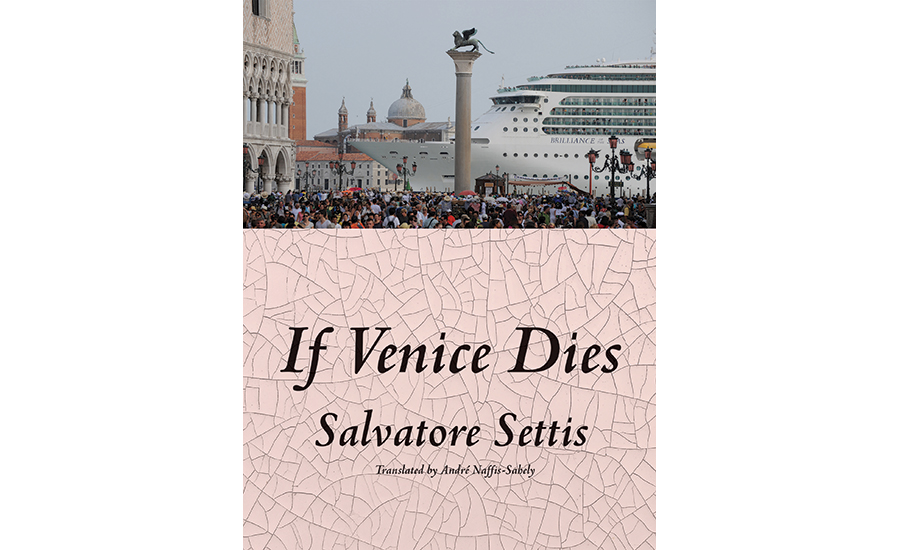If Venice Dies, by Salvatore Settis, translated by André Naffis-Sahely, New Vessel Press, September 2016, paper, 180 pages, $16.95.
It might seem strange that, in a book titled If Venice Dies, the first mention of rising sea levels doesn’t come until page 45, and a discussion of the city’s scandal-plagued flood-barrier construction is held back until page 140. Isn’t the inevitable sinking of the city the most likely cause of its long-discussed demise? Actually not, as Salvatore Settis makes all too clear in this bracing and beautifully written little book.
Settis, an archaeologist, art historian, and former director of the Getty Research Institute, sees that the threats to Venice are amplified not only because of its unique, precarious geography, but because of similar threats to urban health across the planet. The expunging of local tradition, “hit and run” tourists ferried in on “skyscraper ships,” along with skyscrapers themselves, Settis condemns as tools of oppression wielded by global capital and misguided local pride. The habit of “putting a dollar sign on everything” he blames on a growing blindness in government to the value of human qualities. The ersatz is lovingly defined and attacked in a chapter where we visit imitation Venices from California to Chongqing. Similarly, he identifies, as others have, the commodification of experience found in theme parks as the harbinger of doom.
It would be easy to dismiss this book as another impassioned cry in the wilderness by a writer in love with the past. But Settis sets himself apart from others, in this genre of blaming greed and the pressure to change, by virtue of his focus. Venice really is dying, and fast. Its people, particularly the young, have been exported to suburbanizing hinterlands on the far side of the Lagoon. Wealthy interlopers are displacing those who once did the work of maintaining Venice’s everyday existence. And its physical integrity is threatened by proposed megaprojects (such as a ring of skyscrapers on artificial islands shown at the Venice Biennale in 2010).
In his analysis, Settis gives special attention to the complicity of architects; they give “professional camouflage” while acting as “henchmen of the looting of our historic cities and landscapes.” His suggestion to help free architects from service to destructive economic forces is to develop and implement an equivalent to the Hippocratic oath, medicine’s affirmation of purpose. He proposes one derived from mandates given in Book I of Vitruvius: for a broad, generalist education and a practice guided in equal parts by theory and knowledge of construction. This “Vitruvian oath,” only sketched out in his book, reminds us as professionals to serve the needs of a society as we wrestle with the particular wishes of those who pay us—to act in a way that promotes civic health—and, it follows, to push back with force when that health is threatened.
Can a simple oath help architects remember their dual responsibility to clients and society? That may be less likely than keeping the sea from swallowing Venice. But as a necessary precondition to saving that city, perhaps it’s worth a try.

